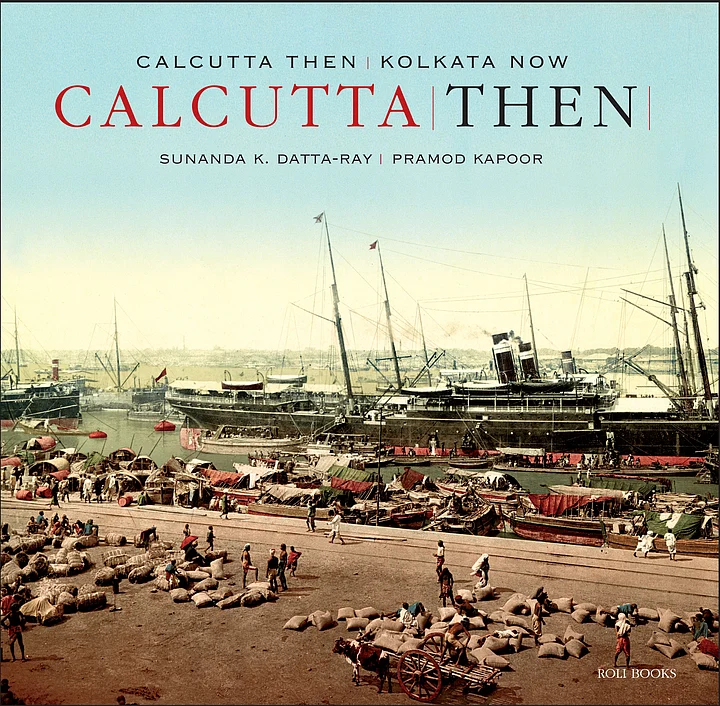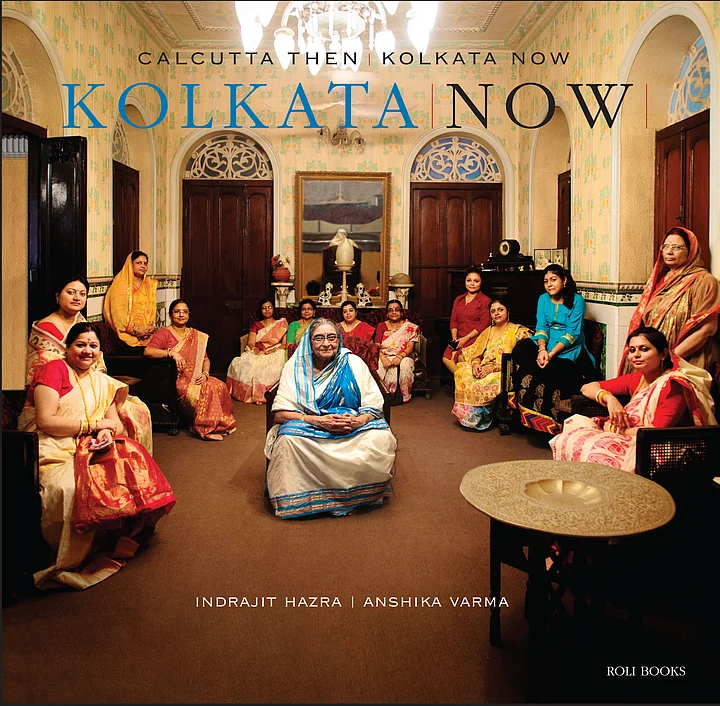(The following has been excerpted with permission from the book ‘Calcutta Then, Kolkata Now’, by Sunanda K Datta-Ray and Indrajit Hazra, published by Roli Books.)
Calcutta Then
Europeans from diverse nations, Armenians and Chinese, Jews and Afghans, Arabs, Persians, Hindus and Muslims, people from all over India, made Calcutta global, before globalisation was even invented. It worshiped at many shrines. The never-ending bustle of Kalighat, temple to Kali, may have inspired the name ‘Kalikatah’ (Kolkata), but the Gothic majesty of St. Paul’s Cathedral dominated the sprawling central park known as the Maidan. The lofty minarets of Nakhoda Masjid, modelled on Akbar’s tomb at Sikandra, and the jeweled intricacy of the Parasnath Jain Temple co-existed with Jewish synagogues, Parsi agiaries and Sikh gurdwaras.

Nirad C Chaudhuri, who himself preferred exile, thought ‘to live in Calcutta was to be reminded at every turn of the cultural history and achievements of modern India, and to be aware of every significant activity of the present.’ For Geoffrey Moorhouse, a British journalist who wrote a sympathetic book on the city, ‘the story of Calcutta is the story of India, and the story of the so-called Third World in miniature.’
Calcutta claimed the first Indian to storm the white bastion of the Indian Civil Service (Satyendranath Tagore), the first president of the Indian National Congress (WC Bonnerjee), and the first Indian to win a Nobel Prize (Satyendranath’s brother Rabindranath).

Lord Sinha Road’ honours Satyendra Prasanno Sinha, Baron Sinha of Raipur, the only non-white ever to be raised to Britain’s hereditary peerage. A plaque marks the hospital where a British army surgeon, Ronald Ross, discovered the cure for malaria by getting mosquitoes to bite his servant. Calcutta was also the birthplace of the deadly dum-dum bullet. Some Bengalis believe, that the local scientist, Sir Jagadish Chandra Bose, invented but didn’t patent the wireless.
Others glory in the Bose–Einstein theory recalling Einstein’s cooperation with a Bengali mathematician, Satyen Bose. Some diehards are still waiting for a third Bose, the ‘lost hero’, ie, Netaji Subhas Chandra of the Indian National Army fame — born in 1897 and killed in a plane crash in 1945, to rise from the dead and restore Bengal’s former glory.
Calcutta was a city of contradictions. The white town’s spacious mansions and tree-lined squares inspired the ‘City of Palaces’ sobriquet. Curzon added the Victoria Memorial, built of white Jodhpur marble (and paid for by Indians). Yet another palatial edifice, Belvedere, in Alipore, now the National Library, recalls Curzon’s dream of ‘a place to which people will resort as they do to the British Museum in London or the Bodleian in Oxford.’
Given his commitment to the city, it is fitting that the Raj Bhavan, formerly Government House, completed in 1805 exactly a century before he retired from India, was modelled on his own family home, Kedleston Manor, in Derbyshire.
Kolkata Now
For the Kolkatan, every occasion demands sweets. So, while the mishti aficionados argue – till the Howrah Bridge freezes over the Hooghly – about which particular sweet is the best in which shop – ‘Vien on Theatre Road has the finest gujia!’ ‘Deshbandhu Mistanna Bhandar on Borobazar has the world’s best mihidana !’ – the neighbourhoods’ less illustrious but equally dexterous sweetshops continue to ply their sweet somethings to every Kolkata household.

The roshogolla – not rasgulla! – stops all Kolkata rivalries on its track, as it brings together not just the city, but its utterly, syrupy Bengaliness. When in November 2017, the Government of India’s Ministry of Commerce’s Geographical Indicator registry... announced that it is difficult to separate the ‘sweet, syrupy, soft cheese balls’ from Bengal, Kolkata’s Bengalis... went into full chest-thumping mode, as if Kolkata had once again been declared the capital of India.
It so happened that when, in 2015, the West Bengal government applied for GI recognition for branding the roshogolla , Odisha contested and set up research committees to back its claim, that the sweet originated in Puri some 600 years ago as kheer mohana. It didn’t help that Odisha started celebrating 30 July as ‘Rasgulla Divas’ from 2015.

The Bengal claim was that the roshogolla ’s inventor was the moira (sweetmaker) Nobin Chandra Das. Das, according to the Bengal ‘roshogolliaths’, had set up a sweet shop in Kolkata’s northern district of Bagbazar in 1866. In the spirit of a true gastronaut, he wanted to create something new that would be away from the madding sandesh and other standard Bengali mithais of the time.

The story, as found on the website of K.C. Das, the Coca-Cola of roshogollas , goes that, after months of toiling, like some sugar-cottage cheese-churning Dr Victor Frankenstein, Das came up with the official Bengali sweet: rosh (syrup) o golla (globe). Bengali pride – that may not have been lost, to start with – was ‘restored’, and Kolkata was recognised, especially in its own eyes and tongue, as the roshogolla ’s sacred birthplace.
The love of food in Kolkata, of course, goes beyond the mishti . While industry may have first flowed out of the old capital of India over the decades, first in dribbles and later in a gush, Kolkata has grown in eating places that range from restaurants to holes in the walls.
Iconic places include Mocambo on Park Street, ‘ever deteriorating’ in its quality of food for old-timers and visiting ex-Kolkatans, still famous for its ‘continental’ khana, to ‘Niranjan’ on Girish Park in the north with its mouthwatering ‘breast cutlet’, the Bengali-ization of ‘braised [mutton] cutlets’) and ‘deemer devil’ (devilled eggs), to Mohan’s kachori shop off Chowringhee.
(At The Quint, we question everything. Play an active role in shaping our journalism by becoming a member today.)




